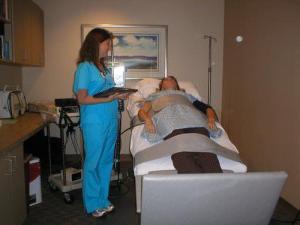Problems with the cardiovascular system are a prerequisite for seeking medical help. Such diseases often lead to serious complications, disability, and even death. For this reason, it is necessary to be examined on time and begin treatment. Pathologies of the cardiovascular system can occur for many reasons and have various manifestations. In some patients, an asymptomatic course of ailments is observed, this complicates timely diagnosis and often leads to decompensation of the process. There are many examinations to evaluate the state of the cardiovascular system. One of them is an orthostatic test. It is performed for patients who have difficulty identifying the disease or its cause due to the lack of a characteristic picture or the initial stage.
Orthostatic test: indications for the study

The study is conducted for various diseases associated with impaired functions of the cardiovascular system and its innervation. An orthostatic test is necessary to assess blood flow, since with pathologies it can slow down or, conversely, increase. Most often with diseases there is a delay in venous return. As a result of this, various orthostatic disorders occur. They are expressed by the fact that a person may experience discomfort when changing the position of the body from horizontal (or sitting) to vertical. Most often, dizziness, darkening in the eyes, decreased blood pressure and fainting occur. Complications of orthostatic disorders are: cardiac ischemia with the development of angina pectoris and myocardial infarction, collapse. The reasons may be not only changes in the bloodstream itself, but also the nerve structures responsible for it. In this regard, disorders can be associated with both cardiac pathology and the central nervous system. The main indications are considered: changes in blood pressure (both hyper- and hypotension), insufficiency of coronary circulation, autonomic nervous system.
Types of orthostatic samples
Research can be conducted in many ways. There is both active and passive orthostatic test. The difference lies in the functional load on the patient’s muscle apparatus. An active test implies an independent transition of the patient from horizontal to vertical position. As a result of this, almost all
skeletal muscles contract. To conduct a passive test, a special table is needed, to which the subject is fixed. In this case, the load on the muscles can be avoided. This study allows us to assess the state of hemodynamics before and after a change in body position. Normally, for each person, the main indicators change due to a small change in pressure, as well as due to physical activity. In case of insufficiency of the cardiovascular system, an increase (less often a decrease) in the difference between blood pressure and heart rate before and after the test is observed.
Methods for conducting an orthostatic test
Depending on the type of orthostatic test, the methods of conducting are somewhat different from each other. The most common is the Shellong method. This method is regarded as an active orthostatic test. How to do a Shellong study?
- The patient lies on the couch, he should be as calm as possible. A special blood pressure monitor is connected to it.
- The doctor takes a pulse measurement, then records the results of heart rate and blood pressure over the past 15 minutes.
- The patient is asked to stand up and be upright.
- During this time, a continuous measurement of heart rate and blood pressure occurs.
- The patient again lies down, and the doctor records the results after 0.5, 1 and 3 minutes.
- After the test, a graph is plotted of the pulse and blood pressure versus time.
Interpretation of Results
Despite the fact that changes in hemodynamic parameters during a change in body position occur in each person, there are average indicators. Deviation from the norm in the direction of increasing and decreasing heart rate and blood pressure indicates violations of the cardiovascular or nervous system. When the patient is lying or sitting, the blood is distributed throughout the body and slows down. When a person gets up, she begins to move and goes through the veins to the heart. With blood stasis in the lower extremities or abdominal cavity, the indicators of the orthostatic test differ from normal. This indicates the presence of the disease.
Orthostatic test: norm and pathology
When evaluating the results, attention is drawn to systolic and diastolic blood pressure, heart rate, pulse pressure and autonomic manifestations. An ideal indicator is an increase in heart rate to 11 beats / min, a slight increase in other parameters and the absence of reactions of the nervous system. Light sweating and unchanged state of pressure are allowed before and after the study. Satisfactory is an increase in heart rate of 12-18 beats / min. An orthostatic test with a large increase in heart rate and diastolic pressure, severe sweating and tinnitus, a decrease in systolic blood pressure indicates serious hemodynamic disorders.